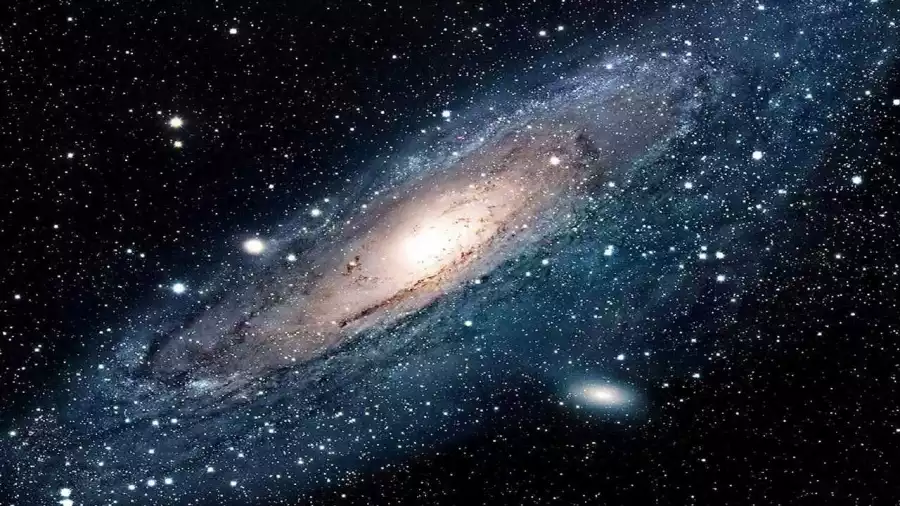Petroleum in Space? Ain’t that a Gas! – Part 3

Petroleum in Space? Ain’t that a Gas! – Part 3
Saturn, the sixth planet out from the Sun, orbits 1.2 billion km from us, at its closest approach—eight times the distance between Earth and Sun.
Titan is the largest of Saturn’s 62 moons. With a diameter of 5,150 kilometers, it is wider than the planet Mercury (though less massive), comprising 96 percent of Saturn’s orbiting mass.
According to Wikipedia, the icy moon gets only about one percent as much sunlight as Earth. Hence frigid conditions on this moon, where the temperature is 94 to 98 K.
Titan holds the distinction, of being the solar systems only planetary satellite, with a thick atmosphere—which, like that of Earth, is nitrogen-rich.
In contrast to our planet though, the air on Titan consists of one to six percent methane and smaller quantities of heavier natural gases, such as ethane (C2H6) propane (C2H8) and ethalyne (C2H4).
These heavier species, explains a Case Western Reserve University (U.S.A.) posting, are created when Ultraviolet radiation from the Sun interacts with the methane in the moon’s atmosphere.
“Titan is just covered in carbon-bearing material,” Ralph Lorenz, of John Hopkins University, told Jet Propulsion Laboratory’s Carolina Martinez, “It’s a giant factory of organic chemicals…”
Investigators attribute conditions on Titan, to a temperature and pressure regime, in which methane remains at the triple point—where a substance can exist simultaneously, as liquid, solid, and vapour.
On Earth, for example, water occurs as an atmospheric vapour (clouds), a liquid (fresh and salt water) or a solid (polar and season ice).
But instead of water, the NASA press release noted, “liquid hydrocarbons in the form of methane and ethane are present on the moon’s surface”.
Methane and other hydrocarbons rain from the sky, it reports, “collecting in vast deposits that form lakes and dunes”. A space probe detected surface channels, which the flow of liquid methane has cut.
Space.Com notes as well, “Nitrogen and methane extend around the moon 10 times as far into space as Earth’s atmosphere, sometimes falling to the surface in the form of methane rain”.
In light of this, astronomers are convinced that atmospheric methane is somehow being replaced. The most likely source, they reason, is a layer of methane ice beneath Titan’s surface.
“They believe this crust of methane is floating on top of an ocean of liquid water mixed with ammonia,” writes Fraser Cain, in Universe Today.
Citing a European Space Agency (ESA) news release, Cain explains that the methane has been oozing out in periodic outgassing over millions of years.
Researchers suspect, he says, that heat generated by the gradual crystallization of Titan’s water-ammonia ocean, dissociates methane from the moon’s floating “clathrate hydrate” crust.
The resulting spurts of gas “could produce temporary flows of liquid methane on the surface, accounting for the river-like features seen on Titan’s surface”.
Uranus and Neptune, orbiting beyond Saturn, are gaseous worlds with rocky cores. But they also have methane in their atmospheres.
In the case of Uranus, for instance, University of Oregon astronomers estimate atmospheric methane at two percent, with traces of acetylene and other hydrocarbons.
Methane in the upper atmosphere, the university’s online article says, absorbs red light, giving Uranus its blue-green color.
Astronomers have also found ethane (C2H6) and acetylene (C2H2) in the hazy atmospheres of these two ice giants—as Uranus and Neptune are now known.
This “ice” cognomen comes from the extreme environment of the outer planets: Where temperatures of below 70 K freeze ammonia into ice crystals, which drop out of the atmosphere.
To be continued.







![Omen (2023) [French]](https://www.memesng.com/r/storage.waploaded.com/images/dd54298bd08f79f59778ef388478cff6.jpg?w=50&ulb=true&ssl=1)
![Blue Star (2024) [Tamil]](https://www.memesng.com/r/storage.waploaded.com/images/7b1acd6b27a0d18ac40211103dae2c82.jpg?w=50&ulb=true&ssl=1)















![Under the Gun (2024) [Korean] (TV series)](https://www.memesng.com/r/storage.waploaded.com/images/a3067a74c9cb97b2698ca6a49f95bce9.jpg?w=50&ulb=true&ssl=1)


{{comment.anon_name ?? comment.full_name}}
{{timeAgo(comment.date_added)}}
{{comment.body}}
{{subComment.anon_name ?? subComment.full_name}}
{{timeAgo(subComment.date_added)}}
{{subComment.body}}